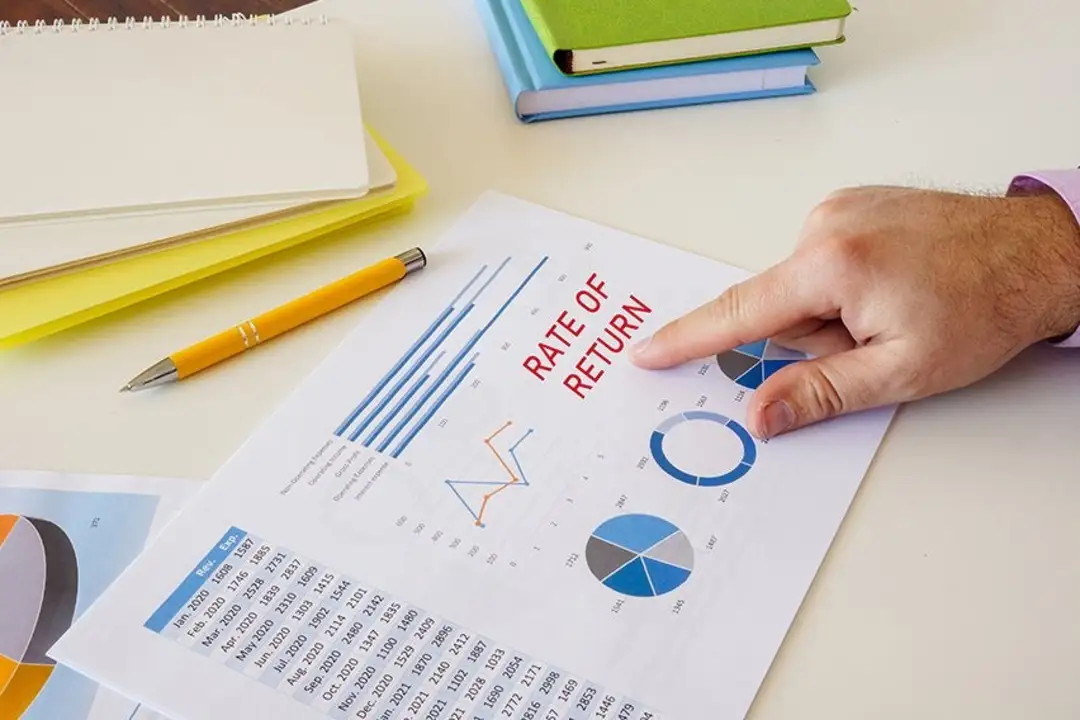What's a good rate of return?

Understanding the Different Types of Returns and What Makes a Good Rate of Return
Investing can be a great way to make your money work for you, but it’s important to understand the basics of how investments work and what makes a good rate of return. In order to get the best return on your investments, you need to be aware of the different types of returns and how they can affect your bottom line.
Types of Returns
The most common type of return is a capital gain, which is the difference between the price you paid for an asset and the price you sold it for. This type of return is typically taxed at a lower rate than other forms of income, making it an attractive option for many investors. Other types of returns include dividends, which are payments from a company to its shareholders, and interest, which is the return you earn on deposits or loans.
In addition to these types of returns, there are also short-term and long-term gains. Short-term gains are realized when you sell an asset within one year of buying it and are taxed as ordinary income. Long-term gains, on the other hand, are realized when you sell an asset after holding it for more than one year and are typically taxed at a lower rate than short-term gains.
What Makes a Good Rate of Return?
The rate of return you can expect to earn on an investment will depend on a variety of factors, such as the type of asset you’re investing in, the amount of risk you’re taking, and the length of time you’re investing for. Generally speaking, a good rate of return is one that is higher than inflation and the amount of risk you’re taking.
For example, if you’re investing in a stock that has an expected return of 10 percent and the inflation rate for the year is 2 percent, then the rate of return you’re earning is 8 percent. This rate of return is considered to be a good rate of return because it is higher than the inflation rate and the amount of risk you’re taking. However, if the inflation rate is 3 percent and the expected return is 8 percent, then the rate of return you’re earning is only 5 percent, which is considered to be a lower rate of return.
In order to get the best return on your investments, it’s important to understand the different types of returns and what makes a good rate of return. Depending on the type of investment you’re making and the amount of risk you’re willing to take, you may be able to achieve a higher rate of return than the average investor. By researching the types of investments available and understanding the risks associated with each one, you can make an informed decision and maximize your returns.
How to Calculate Your Rate of Return and What You Should Expect
Your rate of return is one of the most important metrics when it comes to measuring the performance of your investments. It’s also one of the most difficult to calculate. Fortunately, there are some simple steps you can take to calculate your rate of return and determine whether it’s meeting your expectations.
Step 1: Calculate Your Initial Investment
The first step in calculating your rate of return is to determine the amount of money you initially invested. This includes any money you put into the investment, plus any fees or commissions paid to brokers or advisors. You can find this information on your investment statements or account summaries.
Step 2: Calculate Your Current Value
The next step is to calculate the current value of your investment. This will be the amount of money you have in the investment now, minus any fees or commissions paid to brokers or advisors. Again, this information can be found on your investment statements or account summaries.
Step 3: Calculate Your Total Return
Once you have the initial investment and current value of the investment, you can calculate the total return. To do this, subtract the initial investment from the current value and divide the result by the initial investment. The result is the total return for the investment.
Step 4: Calculate Your Rate of Return
The final step is to calculate your rate of return. To do this, simply divide the total return by the length of time you have held the investment. This will give you the annualized rate of return for the investment.
What to Expect From Your Rate of Return
Your rate of return will depend on the type of investment and the amount of risk you are willing to take. Generally speaking, investments with higher risks will produce higher returns, while lower risk investments will produce lower returns. It is important to remember that past performance is no guarantee of future results.
It is also important to remember that a higher rate of return does not necessarily mean a better investment. You should always consider the potential risks associated with an investment and make sure that the rate of return is worth the risk you are taking.
What Factors Affect Your Rate of Return and How to Maximize It
When it comes to investing, a good rate of return is the holy grail. But what is a good rate of return? And what factors can you control to maximize it? Here, we look at the factors that affect your rate of return and the best ways to maximize them.
Interest Rates
Interest rates are a major factor affecting your rate of return. The higher the interest rate, the higher your rate of return. Interest rates are determined by supply and demand, so if demand for a particular investment is high, then the interest rate will rise. Conversely, if demand is low, the interest rate will decrease. Interest rates also vary from one investment to another, with some investments offering higher rates than others.
Risk
Risk is another factor that affects your rate of return. Generally, the higher the risk associated with an investment, the higher the potential reward. However, it is important to understand that higher risk investments are not always the best; they can also be more volatile and less reliable.
Time
Time is also a factor that affects your rate of return. Generally, the longer you invest your money, the higher the rate of return. This is because the longer you have your money invested, the more time it has to grow and compound. A long-term investment strategy is often the best way to maximize your rate of return.
Diversification
Diversification is also important. Investing in a variety of different assets can help to reduce your risk and maximize your rate of return. By diversifying your investments, you can reduce risk and ensure that you have a steady stream of income regardless of market fluctuations.
Taxes
Taxes can also affect your rate of return. Different investments can be taxed differently, so it pays to understand the tax implications of your investments. Investing in tax-advantaged accounts can help to maximize your rate of return.
Fees
Fees are also an important factor to consider when looking to maximize your rate of return. Investment fees can vary greatly from one investment to another, so it pays to shop around and compare fees. The more you pay in fees, the less money you will have to invest and the lower your rate of return.
Compounding
Finally, compounding is an important factor to consider when looking to maximize your rate of return. Compounding is when your interest or earnings are reinvested and earn additional interest or earnings. The more often you reinvest your earnings, the more your rate of return will increase.
Investing Strategies to Achieve a Good Rate of Return with Minimal Risk
When trying to achieve a good rate of return on your investments, it's important to understand the risks involved and find strategies that can help you maximize your return with minimal risk. Here are a few strategies that can help you achieve a good rate of return with minimal risk.
Diversification
The most effective way to reduce risk while achieving a good rate of return is by diversifying your investments. This means investing in different asset classes, such as stocks, bonds, and real estate, as well as different sectors and industries. By diversifying your investments, you are spreading out the risk across different asset classes and sectors, which can help minimize the impact of any one particular investment.
Rebalancing
Rebalancing your investments on a regular basis can also help you achieve a good rate of return with minimal risk. Rebalancing involves selling off some of your investments that have increased in value and reinvesting that money into other investments that may have lower returns. This helps you maintain a diversified portfolio, while still taking advantage of the potential for higher returns in certain investments.
Low-Cost Investing
Low-cost investing is another way to achieve a good rate of return with minimal risk. Low-cost investing involves investing in low-cost index funds and ETFs, which track the performance of the overall market. This type of investing is less risky than investing in individual stocks, and it can help you achieve a good rate of return over the long-term.
Asset Allocation
Asset allocation is also an important part of achieving a good rate of return with minimal risk. Asset allocation involves deciding how much of your portfolio should be invested in different asset classes, such as stocks, bonds, and real estate. By carefully considering your risk tolerance and goals, you can create an asset allocation that can help you achieve your desired rate of return with minimal risk.
By following these strategies, you can achieve a good rate of return with minimal risk. However, it is important to remember that investing involves risk, and you should always do your own research and understand the risks associated with any investment before making a decision.

Write a comment